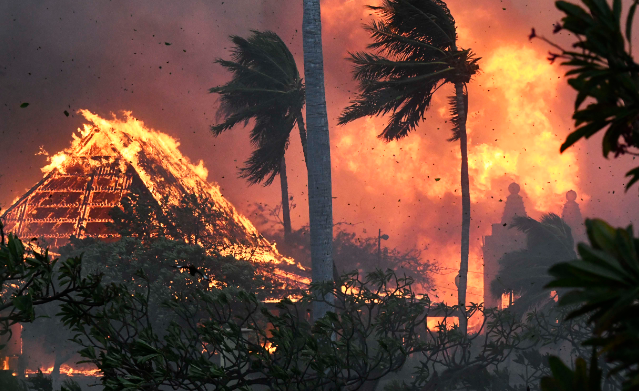A sequence of wildfires in Hawaii has resulted in the loss of at least 96 lives thus far, with the potential for the death toll to increase. Lahaina, a leisure destination with a population of 13,000 on Maui island, attracts around 2 million tourists annually, constituting roughly 80% of Hawaii’s yearly visitors.
Governor Josh Green has labeled these wildfires as the most severe natural calamity ever experienced by the state. Calculations suggest that over 1,000 structures have been demolished, a reconstruction effort that the governor anticipates will span numerous years.
The present count of fatalities resulting from the Maui wildfire has propelled it to become the most lethal wildfire in the United States over the past century. Prior to this, the record was held by the Camp Fire in northern California, which claimed the lives of 85 individuals in 2018. In 1918, wildfires in drought-stricken northern Minnesota led to the deaths of hundreds and the displacement of thousands.
With cautions from the governor regarding the potential escalation of the death toll, Richard Bissen, the Mayor of Maui County, announced that the state has deployed dogs trained to detect human remains to aid in the search for bodies. The Hawaii Tourism Authority has reported that more than 46,000 residents and visitors have been transported off the island via Kahului Airport in West Maui. Local authorities are urging people to refrain from visiting Maui due to the need for accommodations to house those who have been displaced, including residents, tourists, and first responders.
While an official cause for the fire’s ignition has yet to be officially determined, the exceptionally parched conditions stemming from recent drought, potent winds resulting from Hurricane Dora, and an exceedingly arid atmosphere collectively facilitated the rapid and uncontrollable spread of the fire. The US Forest Service notes that nearly 85% of wildfires are ignited by human activities, although natural factors such as lightning strikes and volcanic activity can also initiate them.
Contrastingly, the Hawaii Wildfire Management Organization reports that just a fraction, less than 1%, of wildfires stem from natural origins. Additionally, the Hawaiian islands now consist of over one-fourth non-native grasses that possess high flammability, which is likely a contributing factor to the fire’s extensive propagation.








